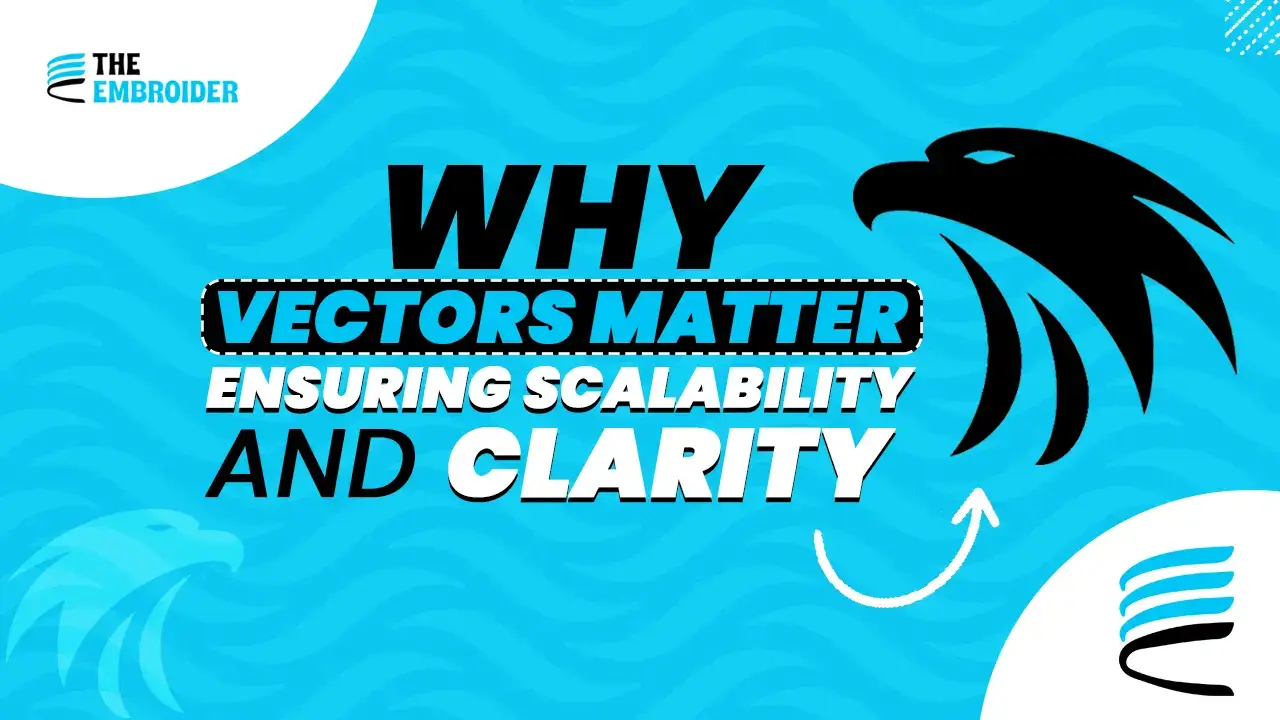Your logo is like your silent ambassador, it should always look sharp and professional. If it blurs when resized, that hurts your brand’s credibility. I’ve worked with dozens of logo projects, turning raster images into vector files, and I can tell you: vectors aren’t optional, they make a world of difference.
Below, I pull from hands-on experience and industry facts to show why vectors matter, how they deliver clarity and scalability, and what steps you can take to make sure your logo always looks its best.
What Are Vector vs Raster Graphics?
- Raster graphics are made of pixels (tiny colored blocks). When you scale a raster image up, it can become blurry or blocky.
- Vector graphics are built with mathematical points, curves, and lines. Once I converted a logo I worked on from raster to vector, the client could use it on everything: from hats to large wall signage with zero loss of quality.
According to TechRadar, vector images are “resolution independent,” meaning they can be resized without losing sharpness, unlike raster images.
Why Vectors Matter for Your Brand
1. Clear Across All Sizes
From a tiny icon on your phone to a large printed banner, vector logos stay crisp. In one project, I saw a logo that was pixelated on a billboard until converted into a vector. After conversion it was clean even at 10× the size.
2. Boosts Professionalism and Recognition
A clean, consistent logo builds trust. When your visuals are sharp everywhere your website, social media, print materials people remember your brand more. Studies show that companies who keep their branding consistent can see 10–20% growth in visibility and recognition.
3. Versatility Across Mediums
Whether your logo goes on a patch, hoodie, website, or banner, vector files make it work without compromise. Because we offer vectorization services, I make sure your logo has crisp outlines and smooth curves, no blur, no stitch distortion, just clean design wherever it lands.
4. Saves Time & Cost in the Long Run
When you have a properly vectorized logo, you avoid having to redo work for different sizes or media. That means fewer revisions, fewer resource waste, and less frustration. In my work, clients report needing 30-50% less time when resizing or adapting vector logos versus trying to scale raster ones.
How to Ensure Your Vector Logos Stay Clear & Scalable
Here’s what I do (and recommend) every time I convert or produce logos for clients:
A. Start with Clean Artwork
If your original file is pixelated or fuzzy, converting it won’t make it perfect. Always begin with the best version you have sharp edges, clear contrast, solid details. I frequently ask clients to send me their highest-res source file because it means much less cleanup later and way better results overall.
B. Use the Right Tools & File Formats
Use vector software like Illustrator or CorelDRAW they give you accuracy and control. Keep your master file in AI or EPS so you can always tweak it later. Export versions like SVG for web or PDF/EPS for print. And if your design will be stitched or patched, make sure paths are closed, shapes are solid, and text is outlined to avoid problems later.
C. Test at Multiple Sizes & Materials
Don’t assume the design works at every scale. Test it tiny (for badges) and big (for signage). For embroidery, try it on the actual fabric. Different materials can change how details show up.
If you like, I can short-rewrite the rest in this same style.
D. Simplify Details Where Necessary
Very fine text or thin lines can be beautiful but when scaled down or stitched, they often disappear. I’ve learned that removing tiny decorative elements improves readability without harming brand style.
E. Work with Experts When Needed
Sometimes internal design tools aren’t enough. If you don’t have vector art expertise, hire or use a vector-logo conversion or design service. For example, our Custom Vector Logo Conversion service makes sure your logo stays sharp, scalable, and production-ready no matter where or how it will be used.
Common Pitfalls (from my experience)
| Mistake | What went wrong | How to avoid it |
| Tiny fonts in the logo | On small items like patch or badges, letters became unreadable | Use bolder fonts or simplify text |
| Missing editable master files | Needed changes later, but only low-res PNG was available | Always keep the original AI/EPS |
| Overcomplicated design | Curves or fine details were lost in embroidery or printing | Simplify shapes; reduce number of paths |
| Using raster files for large prints | Blurry posters or billboards | Start with vectors or convert early in the design process |
Final Thoughts
Vectors aren’t just a design trick, they’re part of how your brand shows up in the world. A vector logo keeps your visuals clean whether printed on a cap, a flyer, or a billboard.
If you’re building a new logo or thinking of giving your current one an upgrade, make vector conversion an early step. It prevents headaches later, and helps your brand always look polished and professional.
FAQs
Q1: Can I convert any logo to vector and get perfect results?
A: Many logos can, especially simple ones. But heavily graded photos or textures often need simplification for good vector conversion.
Q2: Does vectorization always reduce file size?
A: Not always if the vector has many nodes or complex curves, it could be heavy. But still, the flexibility outweighs size in most use cases.
Q3: When should you use a raster instead?
A: For complex photos, detailed illustrations, or artwork with color gradients/renders raster may be better. But for logos and branding, vector is usually the best choice.



